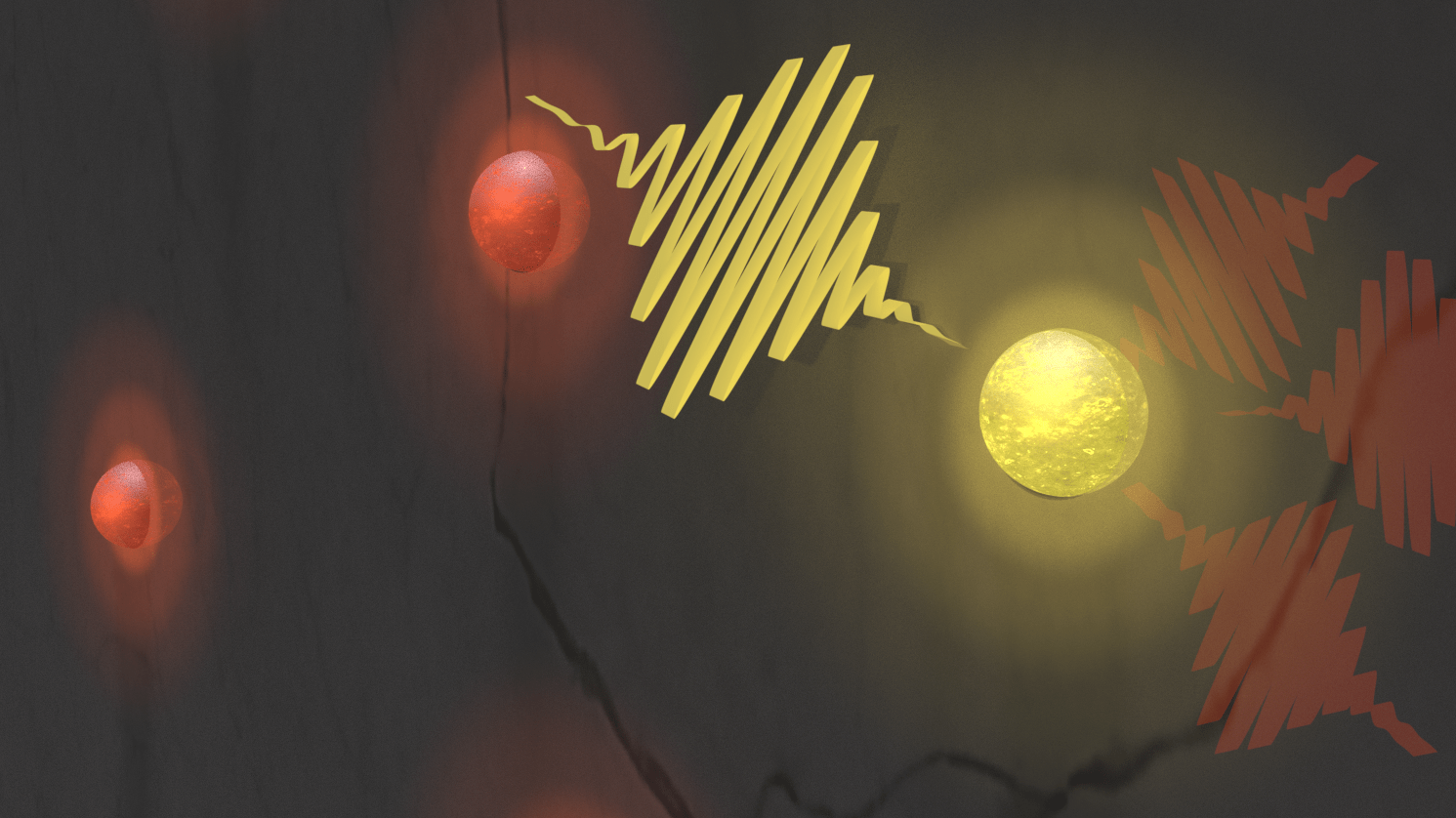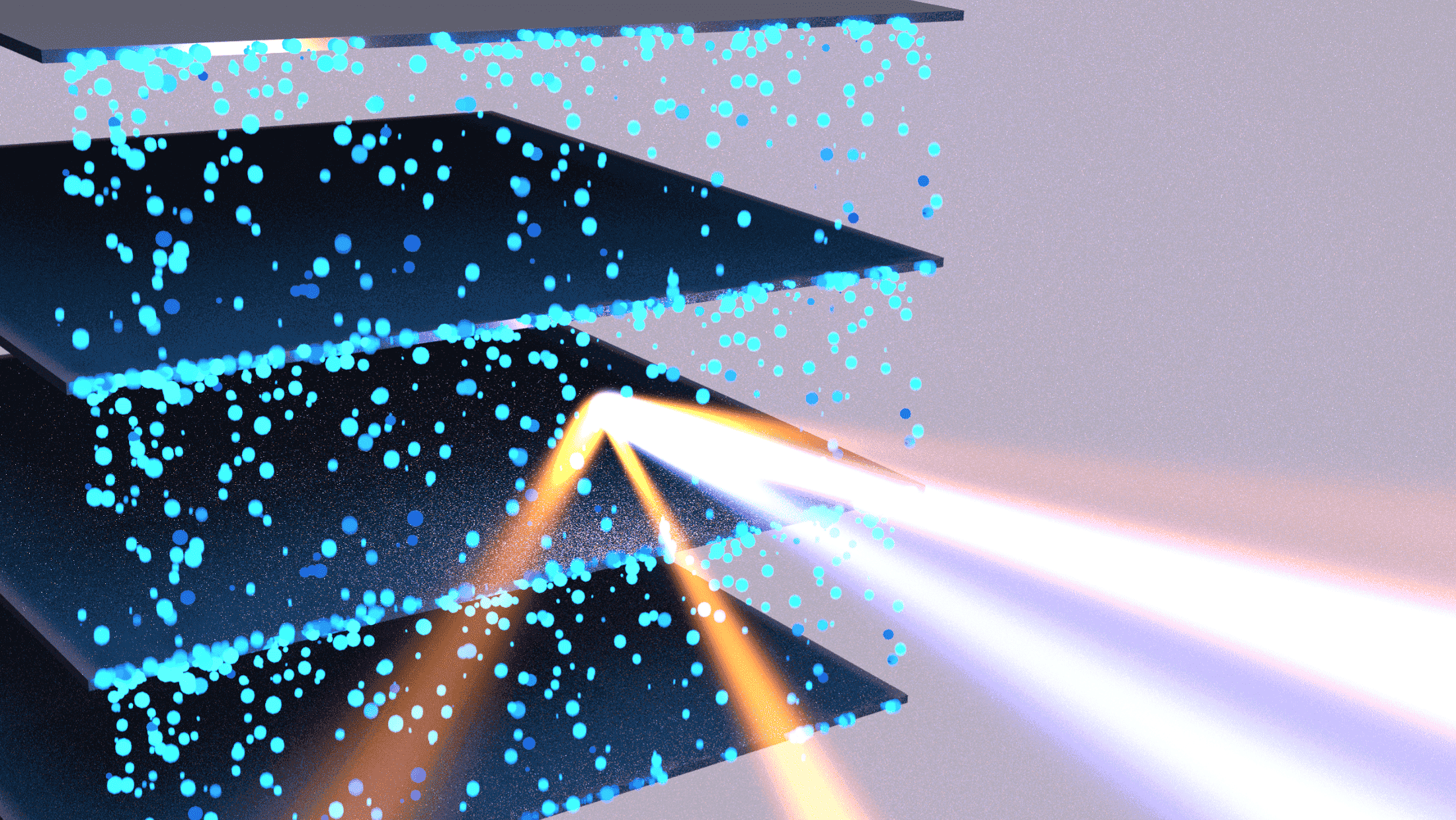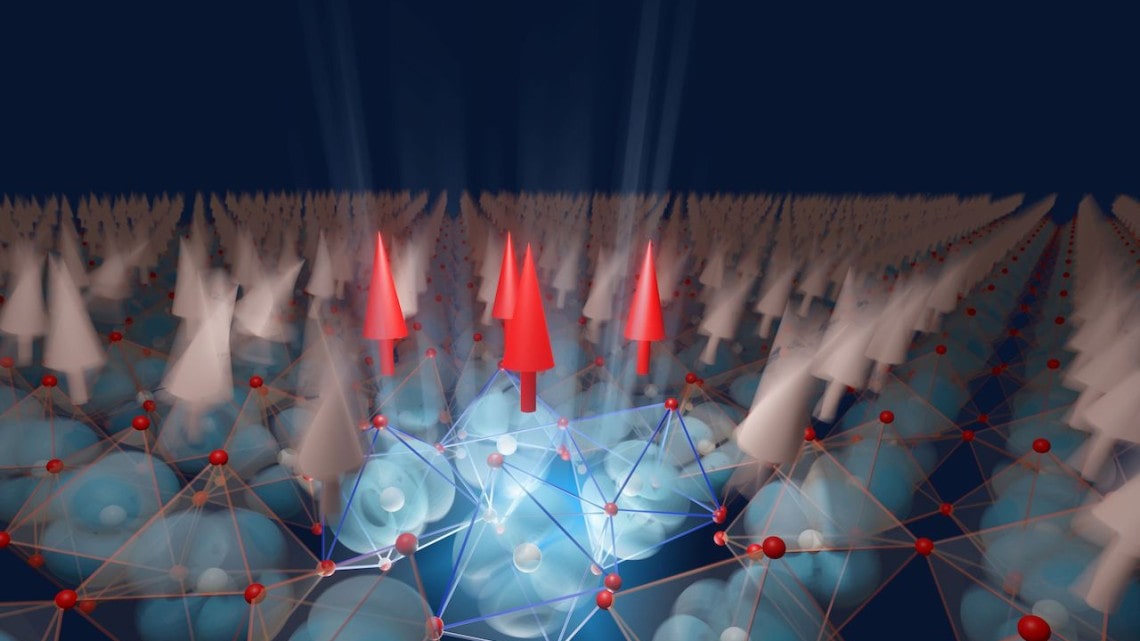Research
Our overarching goal is to discover and understand phenomena in quantum matter. We broadly define quantum matter as systems in which quantum effects play a primary role in determining their properties, which range from materials with strong electronic correlations to objects with nanometer length scale dimensions, at which quantum confinement effects manifest.
We are specifically interested in the interaction of quantum matter with strong light fields, the regime of nonlinear optics. In this regime many new possibilities emerge, such as nonlinear spectroscopies and driving materials out of thermal equilibrium.
Here are some techniques and themes that we currently work on:
 Technique: Multidimensional optical spectroscopy. Multidimensional optical spectroscopy may be considered the most general nonlinear spectroscopic technique [1], which involves exciting a material with multiple ultrashort pulses of light and measuring a nonlinear observable. Compared to most nonlinear spectroscopies, which measure a projection or cross-section of a multidimensional optical response, multidimensional optical spectroscopy is capable of measuring nonlinear optical responses along all of their characteristic axes. This yields physics inaccessible with conventional one-dimensional techniques, for example in coupling between different excitations, many-body interactions, and disentangling intrinsic optical responses and disorder broadening.
Technique: Multidimensional optical spectroscopy. Multidimensional optical spectroscopy may be considered the most general nonlinear spectroscopic technique [1], which involves exciting a material with multiple ultrashort pulses of light and measuring a nonlinear observable. Compared to most nonlinear spectroscopies, which measure a projection or cross-section of a multidimensional optical response, multidimensional optical spectroscopy is capable of measuring nonlinear optical responses along all of their characteristic axes. This yields physics inaccessible with conventional one-dimensional techniques, for example in coupling between different excitations, many-body interactions, and disentangling intrinsic optical responses and disorder broadening.
Theme: Artificial atoms. The Bohr model of the atom introduced the concept of discrete electronic energy levels. Today, we can replicate these discrete excitation spectra in solid-state materials for technological applications, but disorder and interactions with the lattice environment (phonons) complicate the physics tremendously. Defect vacancy centers and colloidal nanocrystals are examples of such systems that we have studied using multidimensional spectroscopy [2,3,4,5], providing much new insight into these “artificial atoms”.
 Technique: Multidimensional terahertz spectroscopy. Many materials with strong electronic correlations manifest interesting physics at cryogenic temperatures. The energy scales of their corresponding collective excitations are therefore in the terahertz frequency regime, orders of magnitude smaller than the photon energies of visible and near-infrared light. A current frontier is thus to implement multidimensional spectroscopy at terahertz frequencies, which has been accomplished by multiple groups in collinear geometries. We have recently developed multidimensional terahertz spectroscopy in a noncollinear geometry [6], allowing us to study both transparent and opaque materials with the advantage of wavevector phase-matching.
Technique: Multidimensional terahertz spectroscopy. Many materials with strong electronic correlations manifest interesting physics at cryogenic temperatures. The energy scales of their corresponding collective excitations are therefore in the terahertz frequency regime, orders of magnitude smaller than the photon energies of visible and near-infrared light. A current frontier is thus to implement multidimensional spectroscopy at terahertz frequencies, which has been accomplished by multiple groups in collinear geometries. We have recently developed multidimensional terahertz spectroscopy in a noncollinear geometry [6], allowing us to study both transparent and opaque materials with the advantage of wavevector phase-matching.
Theme: Layered superconductors. One of the defining characteristics of high-temperature cuprate superconductors, and more recently their nickelate cousins, is their layered structure. One may explain many of their salient physics by describing cuprates as superconducting copper-oxygen planes separated by insulating spacer layers, for example in the appearance of characteristic tunneling resonances in the superconducting phase. These “Josephson plasmons” provide unique insight into both superconducting dynamics and the static superconducting phase, which we have recently studied using multidimensional terahertz spectroscopy [6].
Theme: Fluctuating ferromagnets and ferroelectrics. Ferroelectrics and ferromagnets are ubiquitous in all modern technologies. Despite the remarkable success of Landau theory in describing most ferroics, certain systems defy our classical understanding. Whether frustration or fluctuations, quantum effects can play a primary role in many materials of technological relevance. We aim to study such unconventional ferroics using nonlinear optical techniques, and to use light in manipulating their properties.
 Technique: Mode-selective phonon pumping. Advances in laser technology now allow for generation of intense, tunable light sources in the terahertz and mid-infrared frequency ranges. By targeting specific vibrational modes, light can be used to manipulate crystal structures to control material properties, via so-called nonlinear phononics. Spectacular demonstrations of this concept include inducing ferroic order, topological effects, and signatures of superconductivity from unordered phases in equilibrium. Our group is particularly interested in elucidating the mechanisms that lead to these light-induced non-equilibrium phases.
Technique: Mode-selective phonon pumping. Advances in laser technology now allow for generation of intense, tunable light sources in the terahertz and mid-infrared frequency ranges. By targeting specific vibrational modes, light can be used to manipulate crystal structures to control material properties, via so-called nonlinear phononics. Spectacular demonstrations of this concept include inducing ferroic order, topological effects, and signatures of superconductivity from unordered phases in equilibrium. Our group is particularly interested in elucidating the mechanisms that lead to these light-induced non-equilibrium phases.